4 Ways to increase your ROI through A/B testing

If you aren’t already taking advantage of the benefits of A/B testing, then you should. This form of testing is only one of many that allow brands to measure the success of their brand updates without having to invest in significant overhauls.
This is good news, when our marketing goals are generally centered around seeing a reasonable return on investment (ROI).
ROI is sometimes used interchangeably with the term profit. However, the two are very different. While ROI is a factor in determining the overall profitability of a business, it is not the same. ROI attempts to measure the amount of return on an investment directly. For example, the investment of a given email campaign.
And how valuable are those emails when compared to other marketing channels?

Source: Campaign Monitor
Email marketing is worth the investment, but marketing teams can’t just dump information into an email campaign and expect it to work.
That is where testing your campaigns comes into play. A/B testing can help increase your ROI in several ways, but first, let’s look at what this involves.
A/B testing can be implemented throughout your digital marketing strategy. This can include a variety of marketing materials and tactics, such as social media posts, white pages, and even your website.
When it comes down to email marketing, A/B testing compares one variation of your email campaign to a given subset of subscribers while also sending a second variation to another subgroup.
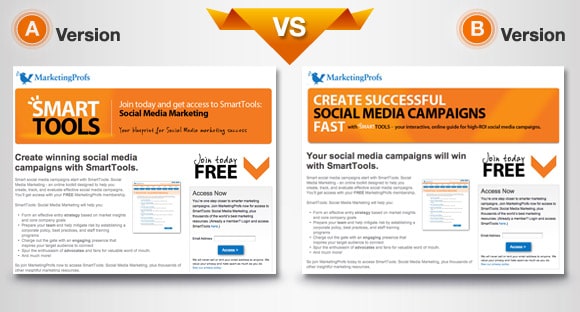
Source: Business2Business
What to test for during A/B testing
We know that it’s impossible to market to every person out there, so that’s why it’s essential to target your specific audience.
If you want to see an increase in ROI, you need to focus on the subscriber’s wants and needs, not your own.
This is why A/B testing is an excellent tool for digital marketers. They can test two variations of marketing materials and see which one suits their audience’s needs the most. Better yet, it doesn’t involve spending an enormous amount of time and money to redo a campaign completely. Instead, the focus will be on tweaking small details to see what works and what doesn’t.
Subject line & preheader text
One of the first things you’ll want to focus on is the subject line and preheader text.
This is the first thing your subscribers will see, and believe it or not, many brands don’t bother to make use of preheader text in their emails.
This is very valuable real estate that is ripe with possibilities.
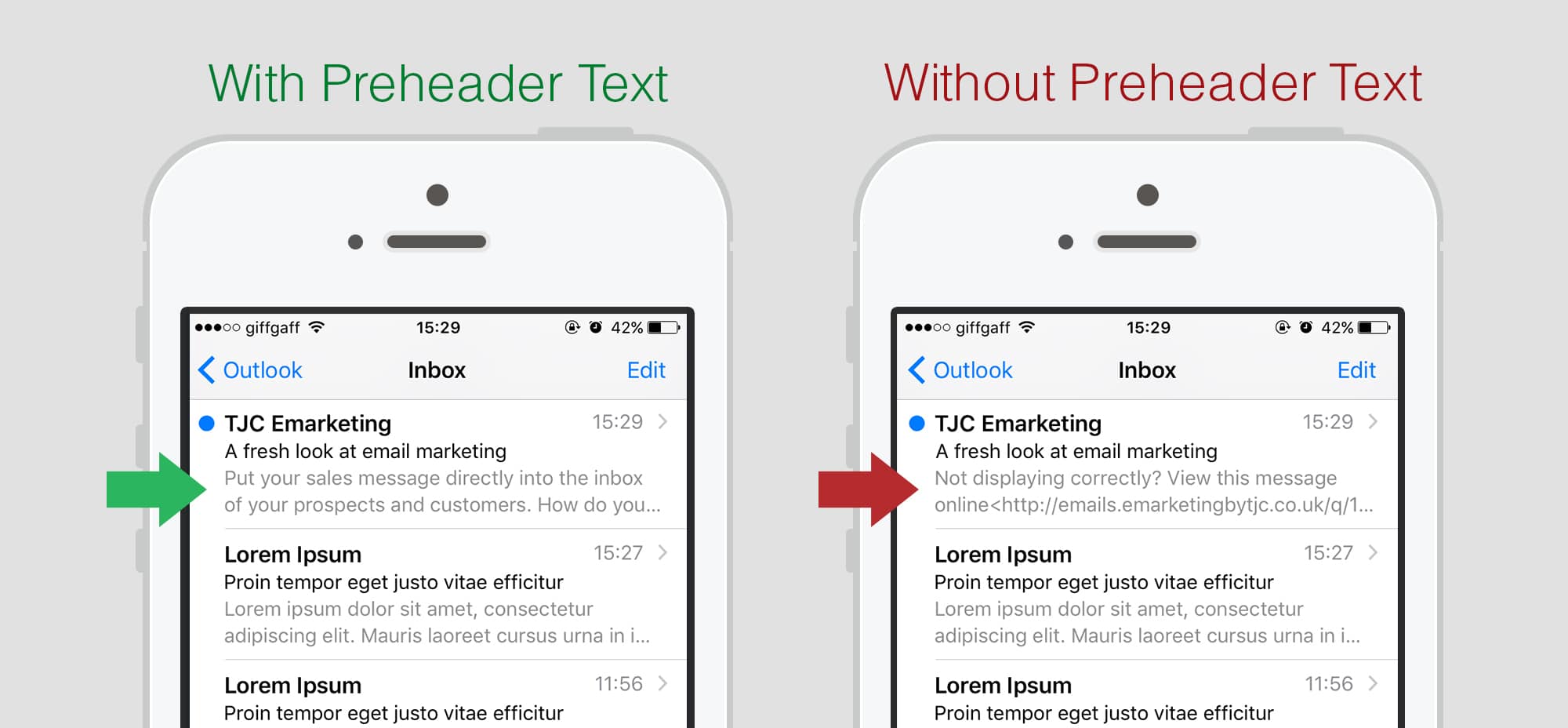
Source: TJC
Notice how the email to the left has text that draws the reader in. Users who want to put their sales message into the inbox of their customers will want to click on this email and see how they can accomplish this for themselves.
The email on the right, however, is nothing but a message that screams “this isn’t working.” This doesn’t mean that the email won’t open correctly, but the text indicates that something may not be working. Readers will be more included to just trash this email instead of open it. Not to mention the wasted opportunity of leveraging the preheader text in a creative way.
Your call to action
No matter what your brand is all about, you want your subscribers to perform a certain action. It can be making a purchase, signing up for a course, or even opting into a monthly newsletter. That means your campaign needs to include some form of a call to action (CTA).
When testing your CTA, there are some different factors you should consider:
-
The copy – Include active, first-person copy in your CTA.
-
The placement – Does your audience want to get right to the CTA? Place it earlier on in the email. If not, place it later in the email.
-
The shape of the button – Yes, these matters. Some users prefer a simple “click here” links while others prefer a large, bold CTA button. Test them both to see what your audience prefers.
-
The color – Experiment with the color scheme of your CTA’s. Psychologically, people respond to different colors in different ways, so your team will want to try bold colors verse more subtle/calming colors.
“From” & sender address
While many marketers know the importance of testing their subject line and preheader text, they tend to neglect the “from” name and sender address.
With an average of 150 emails a day arriving in a person’s inbox, it’s an easy thing to overlook amongst all the noise.
Yes, users want to see emails from their favorite brands. However, receiving something personalized from the head of that brand can significantly increase the open rate of a given email. Just remember, if you are going to send from “someone” in the brand, make sure it’s someone your audience will recognize. Otherwise, that email could end up marked as spam from an unknown sender.
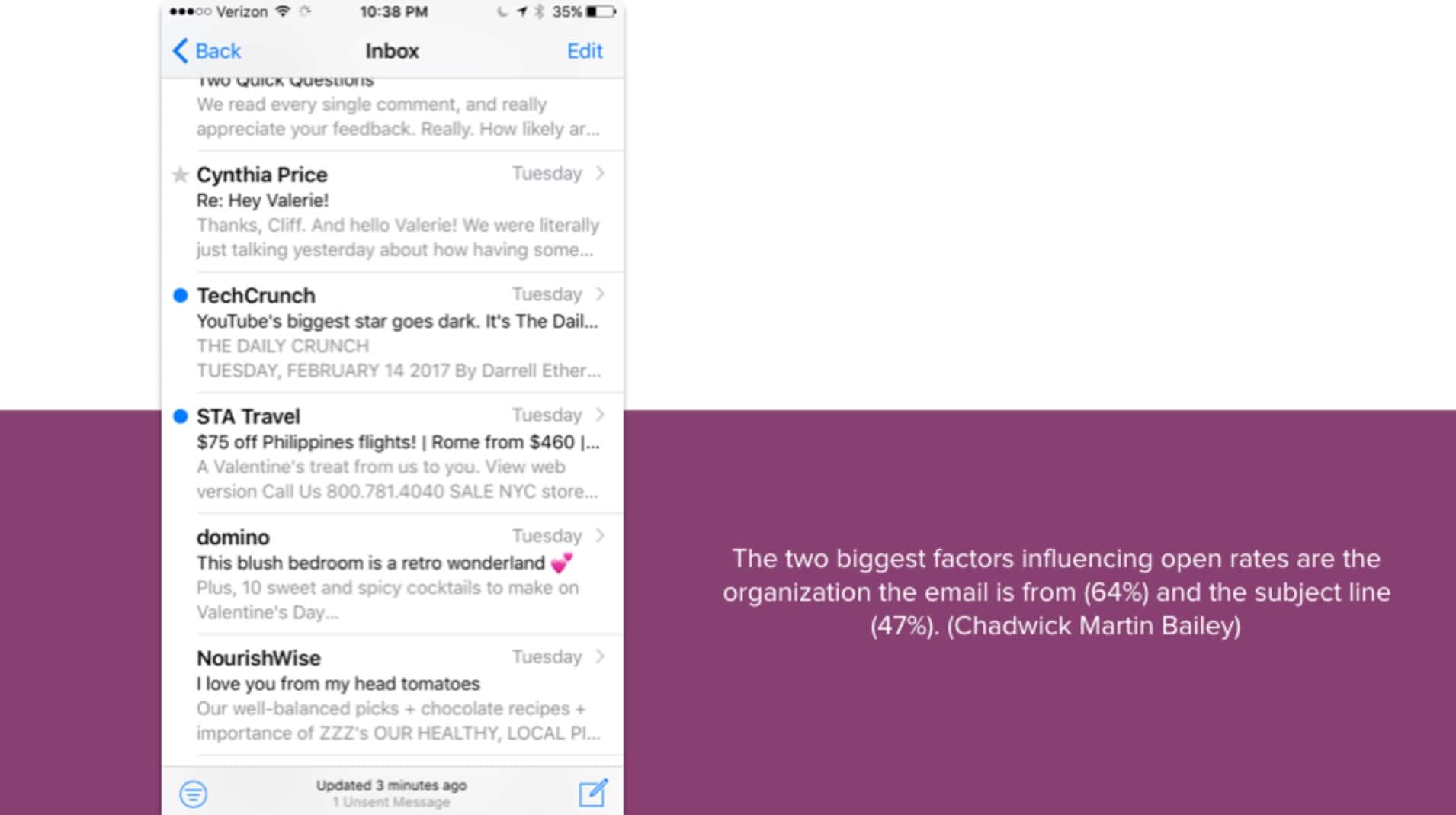
Source: Emma
Metrics to measure
To gauge the success of your email campaign, you’ll want to monitor a number of different metrics.
These numbers will help guide your team when it comes down to what your subscribers want to see. If sample email A has better opens, clicks, and shares when compared to the metrics of email B, then you’ll know that your subscribers prefer the layout or content of that email.
And that doesn’t mean your testing should stop there. Email marketers should be consistently testing their campaigns and tweaking them as necessary to increase their overall ROI.
Some key metrics that you’ll want to keep an eye on include:
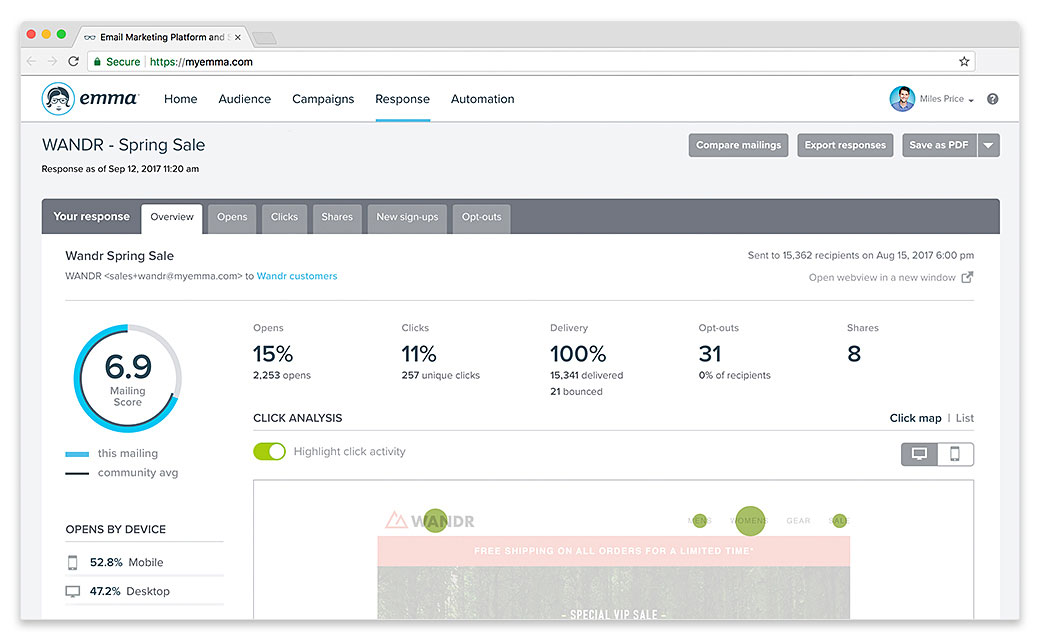
-
Open rate – This metric shows the number of emails that were clicked on and opened by subscribers.
-
Click-through rate – This measures the number of individuals who not only opened the email but also clicked a link you provided that lead them to either a purchase or a specific page on your website.
-
Unsubscribes/opt-outs – This is a vital metric to monitor because it shows you how many people said they didn’t want to receive your emails any longer.
Source: Emma
4 reasons why A/B testing can help increase your ROI
So, we know what to test and what metrics to measure during our A/B tests, now how can these tests help us grow our overall ROI?
1. Improve overall conversion rate without spending more money.
We’ve said it before and we can’t reiterate it enough. It costs more to completely rebuild an email list than it does to re-engage an existing list.
Use the subscriber list you already have and work on list segmentation to help you test various elements of your campaigns to see what resonates with them.
A/B testing allows marketers to focus their efforts on testing the variables that will have the most effect on their overall conversions without having to invest more time and money into recreating an entire campaign.
2. Allows marketers to make smaller, lower-risk modifications.
A/B testing will enable marketers to target their resources to create maximum output with very minimal changes.
How does this help increase ROI?
By testing smaller areas at a time, there’s little need to pour additional monetary resources into overhauling an entire campaign. Saving time, money, and increase the overall ROI of the campaign.
3. Help solve subscriber pain points.
A/B testing allows for subscriber’s voices to be heard. While a marketing team won’t necessarily be announcing that they’re sending a specific email as a part of a marketing test, monitoring the metrics we mentioned earlier will help you see what your audience prefers to see or react to.
4. Help reduce overall bounce rate.
Once you’ve reviewed the results of your test and listened to the voice of your audience, an A/B test will have helped you figure out what works and what doesn’t.
As subscribers find your emails more appealing, you’re going to see a decrease in the bounce rate while also seeing an increase in open rate and click-through rate. Those are the metrics that will help increase your overall ROI. The more time they are spending on your materials, the more likely the conversion from a subscriber to a customer will become.
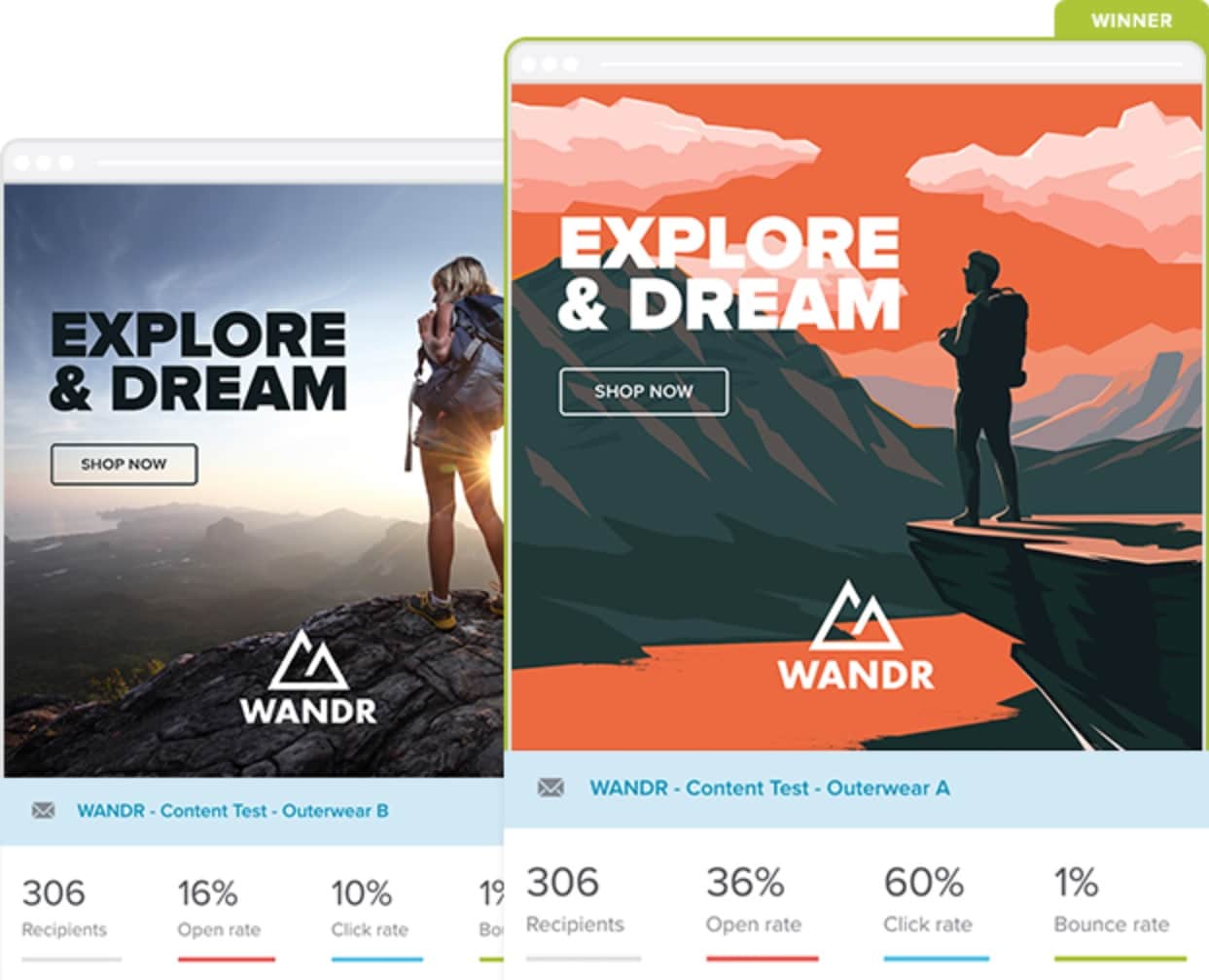
Source: Emma
Wrap up
Testing your email campaign is vital to its overall success. It is possible to increase your ROI using A/B testing, and we’ve covered a variety of ways this is possible.
Remember, when doing you’re A/B testing, you’ll want to run the test more than once while keeping these variants in mind:
-
Monitor key metrics
-
Test a variety of different settings/layouts
-
Invest in the subscribers you have before starting over from scratch.
MOST RECENT ARTICLES
Want to engage your audience and grow your brand? Try Emma's robust easy-to-use product today.












